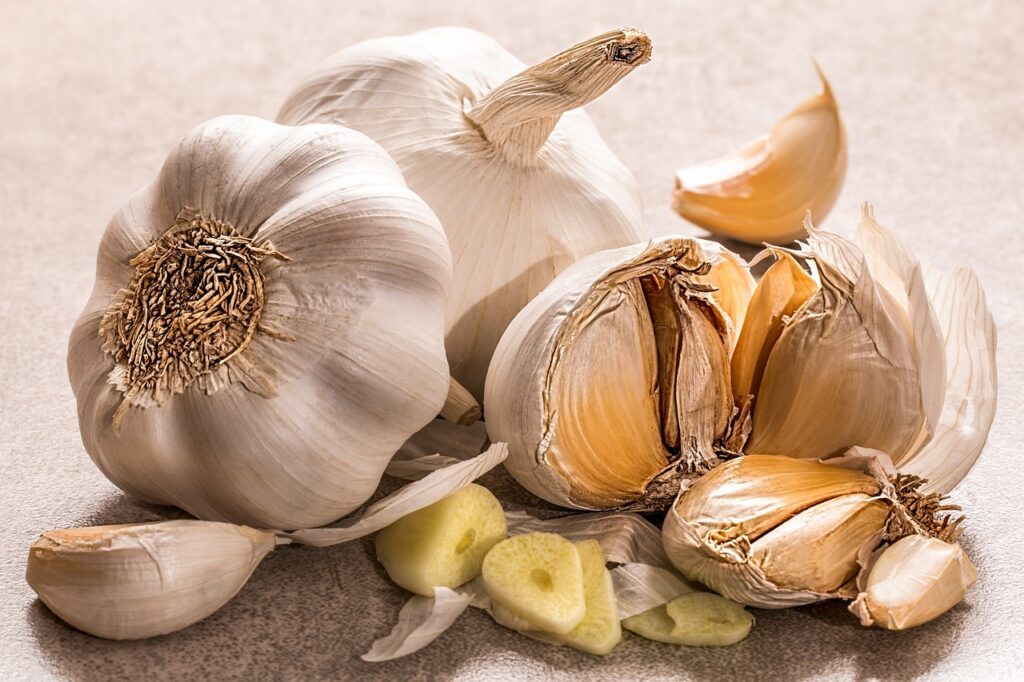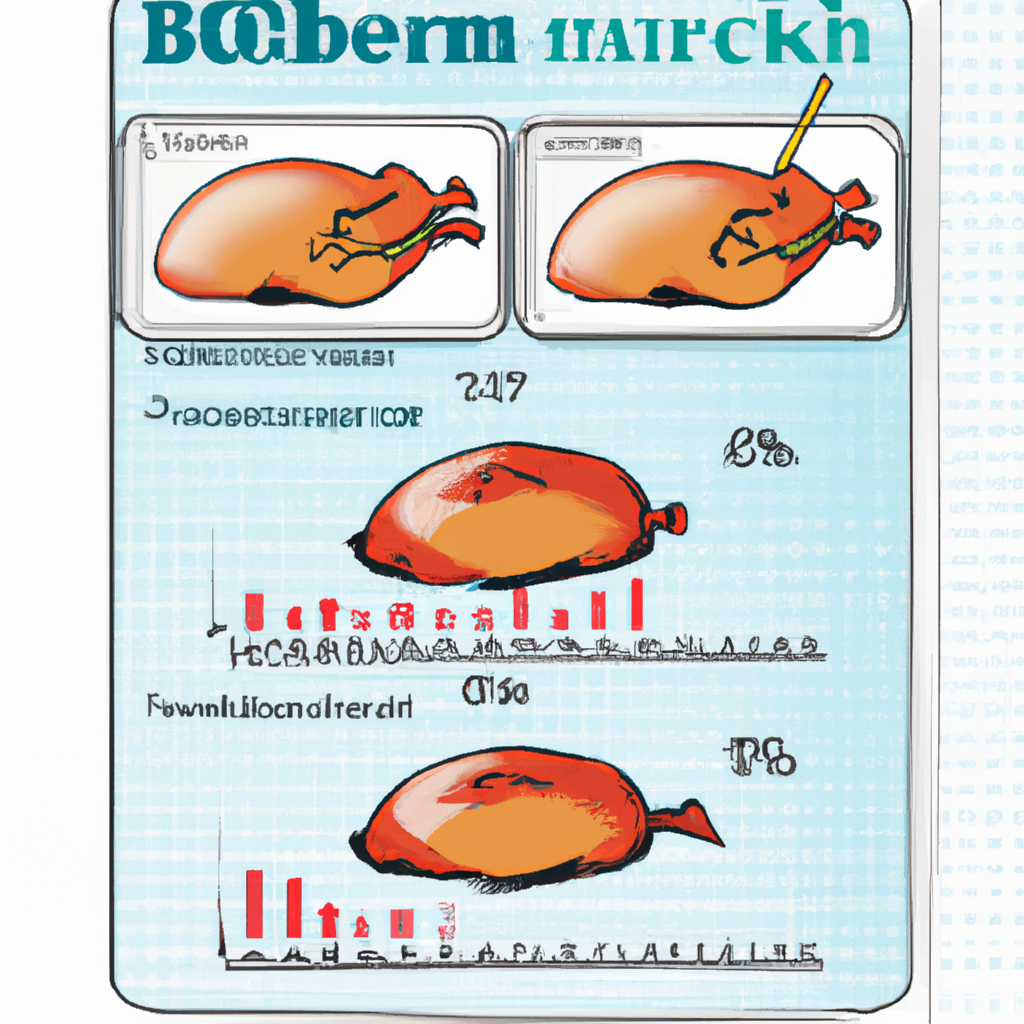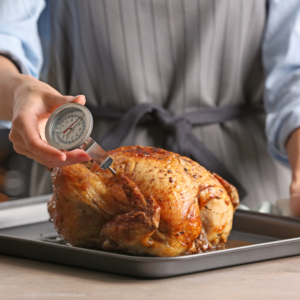Have you ever found yourself unsure of whether your meat or poultry is fully cooked? Worry no more! Using a kitchen thermometer is the foolproof way to ensure the perfect cook every time. By simply inserting the thermometer into the thickest part of the meat, you can confidently determine its doneness based on the recommended internal temperature. No more guessing games or cutting into your meat to check. With a kitchen thermometer, you’ll be the master of perfectly cooked dishes in no time!

Choosing the Right Kitchen Thermometer
When it comes to choosing the right kitchen thermometer, there are a few types to consider. The most common types include instant-read thermometers, leave-in thermometers, and probe thermometers.
An instant-read thermometer is a quick and convenient option that allows you to get a temperature reading in just a few seconds. This type of thermometer is ideal for checking the doneness of cooked meat or poultry.
Leave-in thermometers are designed to be left in the food while it cooks. They typically have a long probe that stays in the meat or poultry throughout the cooking process, allowing you to monitor the temperature without opening the oven or grill.
Probe thermometers are versatile and can be used for a variety of cooking methods. They come with an oven-safe probe that can be inserted into the meat or poultry, and the temperature is displayed on a separate device outside of the oven or grill.
Consider your cooking preferences and needs when choosing the type of thermometer that is right for you.
Features to Consider
There are a few key features to consider when choosing a kitchen thermometer. First, consider the temperature range of the thermometer. Make sure it can measure the temperatures you need for the types of meat and poultry you usually cook.
Another important feature is the accuracy of the thermometer. Look for one that provides precise readings, as this will ensure that your meat and poultry are cooked to perfection and safe to eat.
It’s also worth considering the response time of the thermometer. Some thermometers provide instant readings, while others may take a few seconds or longer to display the temperature. If you prefer a quick and efficient reading, an instant-read thermometer may be the best choice for you.
Lastly, think about the durability and ease of use of the thermometer. Look for one that is made of high-quality materials and is easy to clean. A thermometer with a user-friendly interface and intuitive controls will make the cooking process much easier and more enjoyable.

Recommended Brands
When it comes to kitchen thermometers, there are several reputable brands to consider. Here are a few recommendations:
- ThermoPro: ThermoPro is known for its reliable and accurate thermometers. They offer a range of models to suit different cooking needs, from instant-read thermometers to leave-in options.
- Lavatools: Lavatools is another brand that is highly regarded for its quality thermometers. They offer a wide range of options, including both instant-read and leave-in thermometers, that are known for their accuracy and durability.
- Javelin: Javelin is a brand that specializes in instant-read thermometers. They are known for their fast response times and accurate readings, making them a great choice for quick and precise temperature measurements.
Regardless of the brand you choose, make sure to read reviews and consider the specific features and functions that are important to you.
Preparing the Meat and Poultry
Before using a kitchen thermometer to check the doneness of meat and poultry, it’s important to properly prepare the food. This includes trimming and seasoning the meat, allowing it to rest after cooking, and thawing frozen meat safely.
Trimming and Seasoning
When preparing meat and poultry, it’s important to trim off any excess fat or skin. This helps to ensure that the meat cooks evenly and allows for better penetration of marinades or seasonings.
In addition to trimming, it’s also important to season the meat or poultry before cooking. This can be as simple as adding salt and pepper, or you can get creative with a variety of herbs and spices. Just be sure to season the meat evenly for the best flavor.
Allowing Meat to Rest
After cooking, it’s crucial to allow meat and poultry to rest before carving or serving. This allows the juices to redistribute throughout the meat, resulting in a juicier and more flavorful final product.
The resting process typically involves covering the cooked meat loosely with foil and letting it sit for a few minutes to an hour, depending on the size and type of meat. During this time, the internal temperature will continue to rise slightly, so it’s important to take this into account when using a kitchen thermometer to check for doneness.
Thawing Frozen Meat
If you’re starting with frozen meat or poultry, it’s important to thaw it properly before cooking. Thawing meat in the refrigerator is the safest method, as it allows for a gradual thawing process that minimizes the growth of bacteria.
For quicker thawing, you can also use the defrost setting on your microwave or submerge the meat in a sealed plastic bag in cold water, changing the water every 30 minutes. However, it’s important to cook the meat immediately after thawing using these methods to ensure food safety.

Using the Thermometer Properly
To ensure accurate and safe temperature measurements, it’s important to know how to use a kitchen thermometer properly. This includes inserting the probe correctly, choosing the right spot to measure, and avoiding bone and fat.
Inserting the Probe Correctly
When using a kitchen thermometer, it’s important to insert the probe into the thickest part of the meat or poultry, away from bone and fat. This will give you the most accurate temperature reading, as bone and fat can affect the readings and give you false results.
Choosing the Right Spot to Measure
For larger cuts of meat or poultry, it’s important to measure the temperature in multiple spots to ensure even cooking. This may include measuring in the center and towards the edges of the meat. Always make sure to clean the thermometer probe between measurements to avoid cross-contamination.
Avoiding Bone and Fat
As mentioned earlier, it’s important to avoid inserting the thermometer probe into bone or fat when measuring the temperature. Inaccurate readings can occur when the probe comes into contact with bone or when it is inserted into a fatty area. Be sure to aim for the thickest part of the meat, away from any bones or excess fat.
Understanding Safe Internal Temperatures
To ensure that meat and poultry are safe to eat, it’s important to understand the safe internal temperatures for different types of meat. This includes knowing the different temperatures for beef, pork, chicken, and turkey, as well as the danger zone and carryover cooking.
Different Temperatures for Different Meats
Different types of meat and poultry have different recommended internal temperatures for safety. For beef, the USDA recommends cooking steaks and roasts to a minimum internal temperature of 145°F (63°C) for medium-rare, 160°F (71°C) for medium, and 170°F (77°C) for well done.
For pork, the recommended internal temperature is 145°F (63°C) for all cuts. Ground pork should be cooked to a minimum internal temperature of 160°F (71°C).
Chicken and turkey should be cooked to a minimum internal temperature of 165°F (74°C) to ensure safety.
The Danger Zone
The danger zone refers to the temperature range in which harmful bacteria can grow rapidly, which is between 40°F (4°C) and 140°F (60°C). It’s important to avoid keeping meat and poultry in the danger zone for an extended period of time to prevent foodborne illnesses.
When using a kitchen thermometer, it’s important to ensure that the meat reaches the recommended internal temperature to kill any bacteria that may be present.
Considering Carryover Cooking
Carryover cooking refers to the phenomenon where the internal temperature of the meat continues to rise even after it has been removed from the heat source. This is why it’s important to account for carryover cooking when using a kitchen thermometer to check for doneness.
To account for carryover cooking, it’s recommended to remove the meat or poultry from the heat source when the thermometer reads a few degrees below the desired final temperature. The residual heat will continue to cook the meat, bringing it to the desired temperature while allowing the juices to redistribute.

Using a Digital Thermometer
Digital thermometers offer a range of benefits when it comes to checking the doneness of meat and poultry. They provide accurate and precise readings, have easy-to-read displays, and often come with additional features such as temperature alarms.
Benefits of Using a Digital Thermometer
Digital thermometers are known for their accuracy and precision. They provide instant readings, allowing you to quickly and efficiently check the temperature of your meat or poultry. The display on a digital thermometer is typically clear and easy to read, making it simple to determine if the food is ready or needs more time to cook.
Another advantage of digital thermometers is that they often come with programmable temperature alarms. These alarms can be set to go off when the food reaches the desired internal temperature, alerting you that it is time to remove the meat or poultry from the heat source.
Reading the Display
When using a digital thermometer, it’s important to know how to read the display correctly. Most digital thermometers have a large, clear screen that displays the temperature in large numbers. Some models may also display additional information, such as a timer or temperature history.
To get an accurate reading, ensure that the probe is inserted correctly into the meat or poultry and that it is not touching bone or fat. The display will show the current internal temperature, allowing you to monitor the cooking progress.
Setting Temperature Alarms
Temperature alarms are a useful feature found in many digital thermometers. These alarms can be set to go off when the food reaches a specific internal temperature, helping you to avoid overcooking or undercooking your meat or poultry.
To set a temperature alarm, consult the user manual of your specific thermometer model. Typically, you will need to press a button to activate the alarm mode and then input the desired temperature. Once set, the alarm will go off when the food reaches the selected temperature, alerting you that it is time to remove it from the heat source.
Using an Analog (Dial) Thermometer
Analog thermometers, also known as dial thermometers, provide a different method of checking the doneness of meat and poultry. While they may not offer the same level of precision as digital thermometers, they have their own advantages.
Advantages of an Analog Thermometer
Analog thermometers are known for their simplicity and ease of use. They typically have large, easy-to-read dials that display the temperature readings. These thermometers do not require batteries, making them a reliable option that can be used anytime.
Another advantage of analog thermometers is that they are generally less expensive than digital thermometers. If you are on a budget or prefer a more traditional approach to cooking, an analog thermometer may be the best choice for you.
Interpreting the Dial Readings
When using an analog thermometer, it’s important to understand how to interpret the dial readings correctly. The dial is marked with temperature indicators and a needle that points to the current temperature.
To read the dial, make sure the probe is inserted correctly into the meat or poultry. Wait for a few seconds to allow the needle to stabilize and stop moving. The temperature reading will be indicated by the position of the needle on the dial.
Depending on the model, the dial may feature both Fahrenheit and Celsius temperature scales. Make sure you are familiar with the scale used by your thermometer to avoid any confusion when interpreting the readings.
Calibrating the Thermometer
To ensure accurate readings, it’s important to calibrate an analog thermometer regularly. Over time, the accuracy of these thermometers can drift, so it’s important to make sure they are properly calibrated.
To calibrate an analog thermometer, you will need a known accurate reference thermometer. Fill a glass with ice water and insert both thermometers into the water, being careful not to let them touch the sides or bottom of the glass. After a few minutes, compare the readings of the two thermometers. If there is a significant difference, you may need to adjust the dial of the analog thermometer to ensure accuracy.
Consult the user manual of your specific analog thermometer for the calibration process, as it can vary depending on the model.

Checking the Doneness of Different Meats
Different types of meat require different cooking times and internal temperatures to reach the desired level of doneness. Here are some guidelines for checking the doneness of beef, pork, chicken, and turkey.
Beef Cuts and Temperatures
For beef, the level of doneness is often a matter of personal preference. Here are some recommended internal temperatures for different levels of doneness:
- Rare: 125°F (52°C)
- Medium-rare: 135°F (57°C)
- Medium: 145°F (63°C)
- Medium-well: 155°F (68°C)
- Well done: 160°F (71°C) and above
These temperatures can vary slightly depending on the cut of beef and the desired level of tenderness. Remember to use a reliable kitchen thermometer to check the internal temperature accurately.
Pork Cuts and Temperatures
For pork, the USDA recommends cooking to a minimum internal temperature of 145°F (63°C) for all cuts. This will ensure that the meat is safe to eat while still maintaining juiciness and flavor.
Ground pork should be cooked to a minimum internal temperature of 160°F (71°C) to ensure any bacteria present are killed off.
Properly cooking pork to the recommended internal temperatures is important to prevent the risk of foodborne illnesses, such as trichinosis.
Chicken and Turkey Cuts and Temperatures
Chicken and turkey should always be cooked to a minimum internal temperature of 165°F (74°C) to ensure safety. This includes all cuts, from whole birds to individual pieces.
When checking the doneness of chicken and turkey, insert the kitchen thermometer into the thickest part of the meat, avoiding touching bone or fat. Make sure to monitor the temperature carefully to ensure it reaches the appropriate level.
Testing Poultry Doneness in Other Ways In addition to using a kitchen thermometer, there are other ways to check the doneness of poultry. These methods can provide additional indicators of whether the meat is cooked to a safe temperature.
Checking Color and Juices
One way to test the doneness of poultry is by checking the color and juices. Cooked poultry should have an opaque white color, with no traces of pink or red. The juices should run clear when the meat is pierced with a fork or knife.
Using a Meat Fork
Another method is to use a meat fork to test the firmness of the meat. Insert the fork into the thickest part of the poultry and twist it slightly. If the juices run clear and the meat feels firm to the touch, it is likely cooked to the desired level.
Feeling the Firmness
Lastly, you can use your fingers to feel the firmness of the poultry. Gently press the meat with your fingers. If it feels firm and springs back, it is likely cooked. If the meat feels soft and spongy, it may need more cooking time.
These methods can be used in conjunction with a kitchen thermometer to ensure accuracy and safety.
Tips and Tricks for Perfectly Cooked Meat
To achieve perfectly cooked meat and poultry, here are some tips and tricks to keep in mind:
Letting Meat Rest Before Carving
After cooking, it’s important to let meat and poultry rest before carving or serving. This allows the juices to redistribute throughout the meat, resulting in a juicier and more flavorful final product.
When meat is cooked, the juices are pushed towards the center. Allowing the meat to rest for a few minutes to an hour, depending on the size and type of meat, allows the juices to evenly distribute, resulting in a more tender and flavorful outcome.
Using Time as a Rough Gauge
While using a kitchen thermometer is the most accurate way to check the doneness of meat, you can also use time as a rough gauge. The recommended cooking times vary depending on the type and cut of meat, so be sure to consult a reliable source or recipe for specific guidelines.
Keep in mind that cooking times can vary depending on factors such as the size and thickness of the meat, the cooking method used, and the accuracy of your oven or grill. Using a kitchen thermometer in conjunction with time can help ensure that the meat is cooked to the desired level.
Monitoring the Temperature Throughout Cooking
To avoid overcooking or undercooking, it’s important to monitor the internal temperature of meat and poultry throughout the cooking process. This is especially important for larger cuts or whole birds, as they can cook unevenly.
By regularly checking the temperature using a kitchen thermometer, you can make adjustments to the cooking time or heat source if needed. This will help ensure that the meat is cooked to the desired level of doneness and minimize the risk of foodborne illnesses.
Cleaning and Care of the Thermometer
To maintain the accuracy and longevity of your kitchen thermometer, it’s important to properly clean and care for it. This includes properly washing the probe, storing the thermometer correctly, and replacing batteries if applicable.
Properly Washing the Probe
After each use, it’s important to wash the probe of the thermometer thoroughly with hot soapy water. Make sure to remove any food residue or grease that may be present.
Avoid submerging the entire thermometer in water, as this can damage the electronics. Instead, focus on cleaning the probe, which is the most crucial part for accurate temperature readings.
Storing the Thermometer
Proper storage of your kitchen thermometer is essential to protect it from damage and ensure its longevity. Most thermometers come with protective covers or cases. Make sure to keep the thermometer in its cover or case when not in use to prevent any accidental damage.
Store your thermometer in a cool and dry place. Avoid exposing it to extreme temperatures or direct sunlight, as this can affect its performance and accuracy.
Replacing Batteries (If Applicable)
If your thermometer uses batteries, it’s important to keep an eye on the battery life and replace them as needed. Many thermometer models have a low battery indicator that will alert you when it’s time to replace the batteries.
Follow the instructions provided by the manufacturer for replacing the batteries in your specific thermometer model. Make sure to use the correct type and size of batteries to ensure optimal performance.
By taking proper care of your thermometer, you can ensure that it remains accurate and reliable for years to come.
In conclusion, using a kitchen thermometer is an essential tool for checking the doneness of meat and poultry. By selecting the right thermometer, preparing the meat properly, understanding safe internal temperatures, and using the thermometer correctly, you can ensure that your meals are cooked to perfection. Whether you choose a digital or analog thermometer, following the recommended guidelines and using additional methods to check for doneness will help you achieve consistently delicious results. Remember to also clean and care for your thermometer properly to maintain its accuracy and longevity. With the help of a kitchen thermometer, you can cook with confidence, knowing that your meat and poultry are safe and cooked to your liking. Happy cooking!

